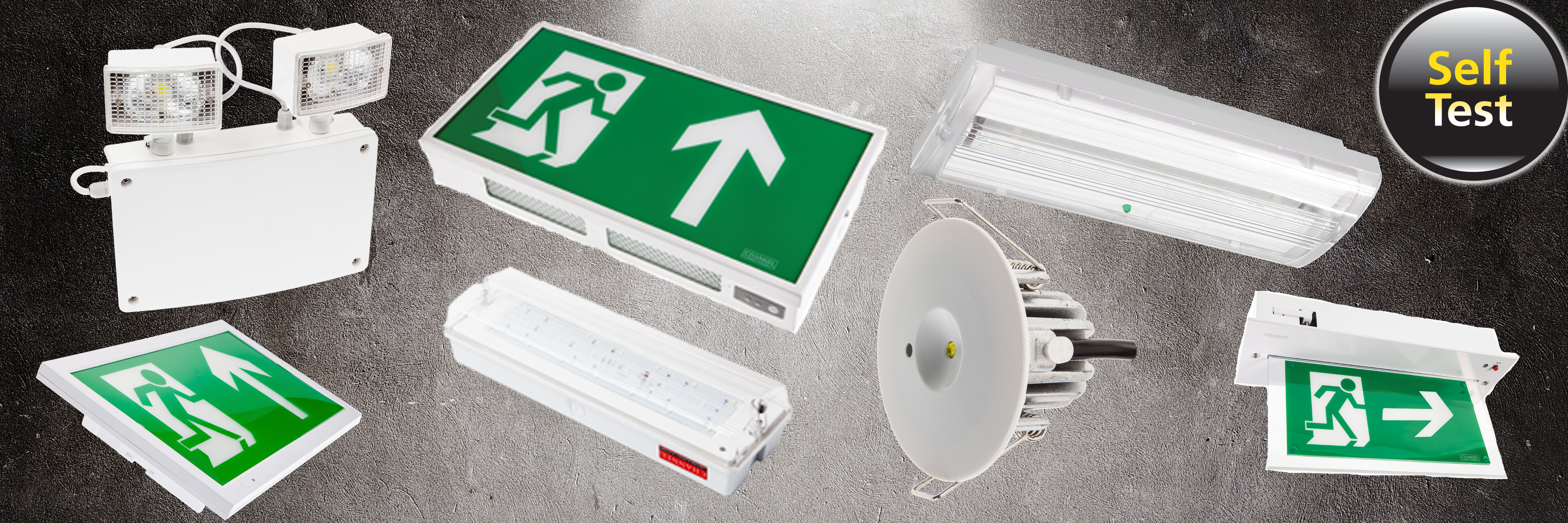
By law it is required that emergency lighting installations must have routine tests carried out, these tests should all be documented with the results including maintenance and rectification results all held on file. Recommendations for the minimum test schedules are provided in BS5266 and EN50172.
Testing emergency lighting does not take much effort or difficulty but inspecting every lighting luminaire for lamp starting, operation and duration can be can be labour intensive and therefor expensive. It also requires that every installation will require a number of key switches to be positioned so each luminaire can be seen as each test is carried out – this can increase the costs of the initial installation and may detract from the aesthetics of the property.
Purchasing self-test emergency lighting units can bring many benefits including reducing labour costs and time, the initial costs may be higher but overall they provide a very short payback period, making them an option that should be considered when starting your project.
Benefits of self-test emergency light units:
• Easy to install – no need for key switches / data cables etc
• Convenient – mandatory tests are carried out without disruption to normal use of the building
• Due diligence – automatic tests are conducted and faults are indicated
• Reduced maintenance – self test units identify faults in luminaires requiring maintenance, any faults are then highlighted to maintenance personnel, saving them searching the building for faults
• Reduction of wasted time – saves personnel inspecting every emergency lighting luminaire
• Staggered tests – tests on luminaire are will action at different times meaning ever area is still protected in the event of a real emergency.
• Cost saving – there is no need for dedicated personnel to initiate test and inspect luminaire. maintenance personnel are only required to rectify faults and re-set systems
Self-test units use an accurate internal clock programmed to interrupt the permanent mains supply at set intervals, initiating emergency lighting tests. Self-test units are supplied with 3 pre-programmed settings:
1) Short duration tests once every week / month
3) Full test duration once every 12 months (as recommended in BS5266 and EN50172)
During initial power up of a self-test unit the system will run through a commissioning stage – the internal clock will start at a random time between 0-24 hours, this avoids the luminaires all going into test at the same time. After an initial charge up time (usually between 48 – 72 hours) the unit will carry out a full duration test. Based on the results and assuming all the results are satisfactory the LED status indicator will show a positive/healthy condition. Once the above is completed the internal microprocessor will start the standard programmed test schedule.
It is still possible to run a manual test on the self-test emergency lighting units.
Monitoring Results.
A single tricolour LED indicates the system status:
• Healthy – Green LED on constant (pulses once every minute to show micro-processor is active and functioning.
• Battery high/low – Amber LED flashing and internal buzzer which sounds for 10 seconds every 4 hours
• If a fault clears the LED indicators will return to green.
During test period:
• Green LED on constant
• Passed test – LED returns to green
• Failed test – Red LED flashing and internal buzzer sounds for 10seconds
• every 4 hours
*The fault must be rectified and a manual retest carried out (by pressing the test button) before the indicators will return to the healthy condition
At Channel we have a range of self-test emergency lighting units available, further information can be found by clicking the product below and you can easily find a stockist online by checking our ‘Find A Stockist’ page:
• Grove
• Forest
• Vale
• Dale
• Camber
• Brook
• Meteor LED
• SOHO
• Ceilo
• Safe Spot MK2
